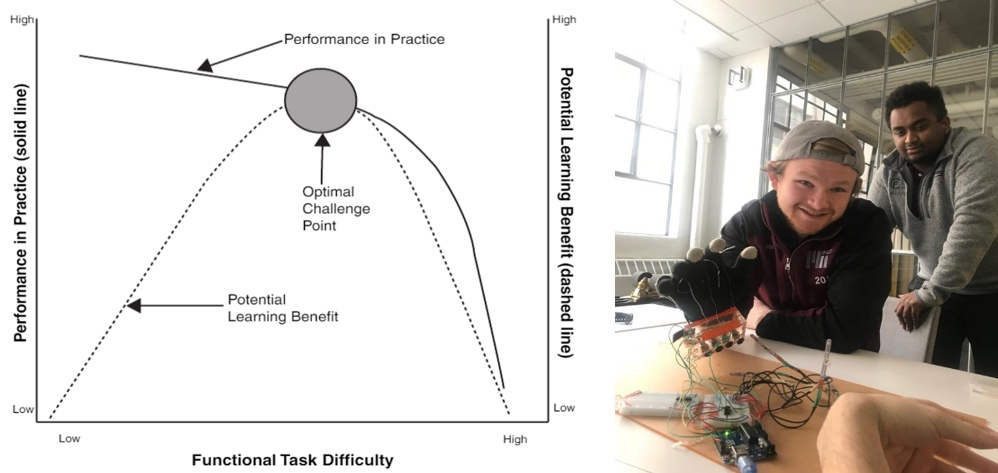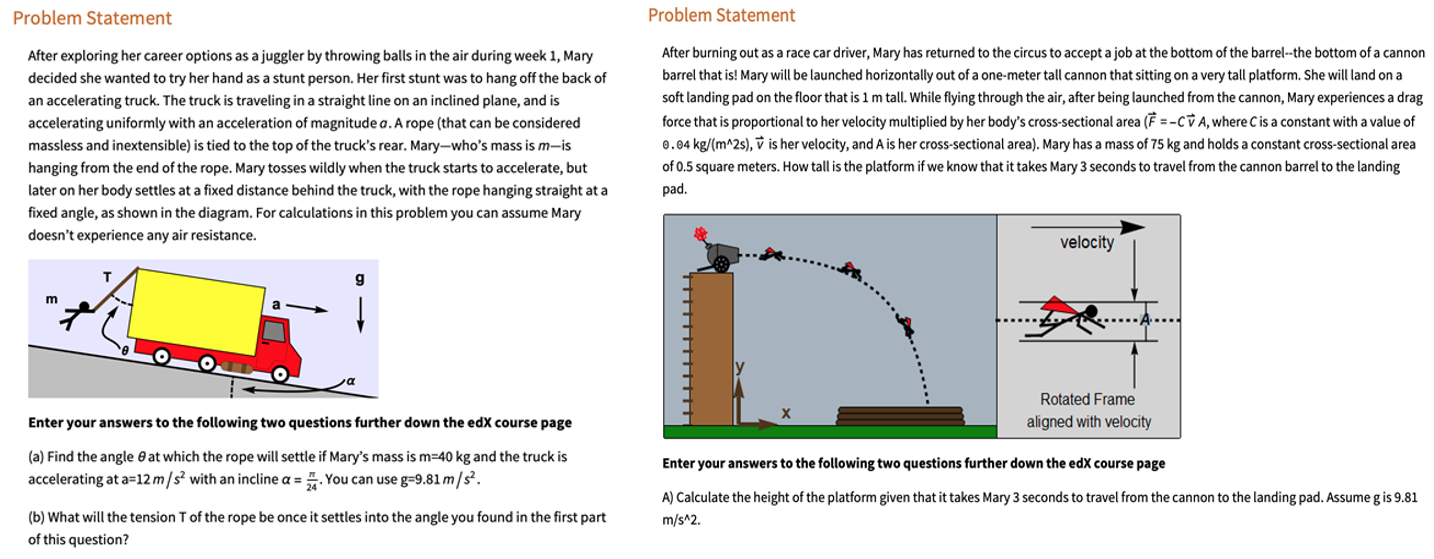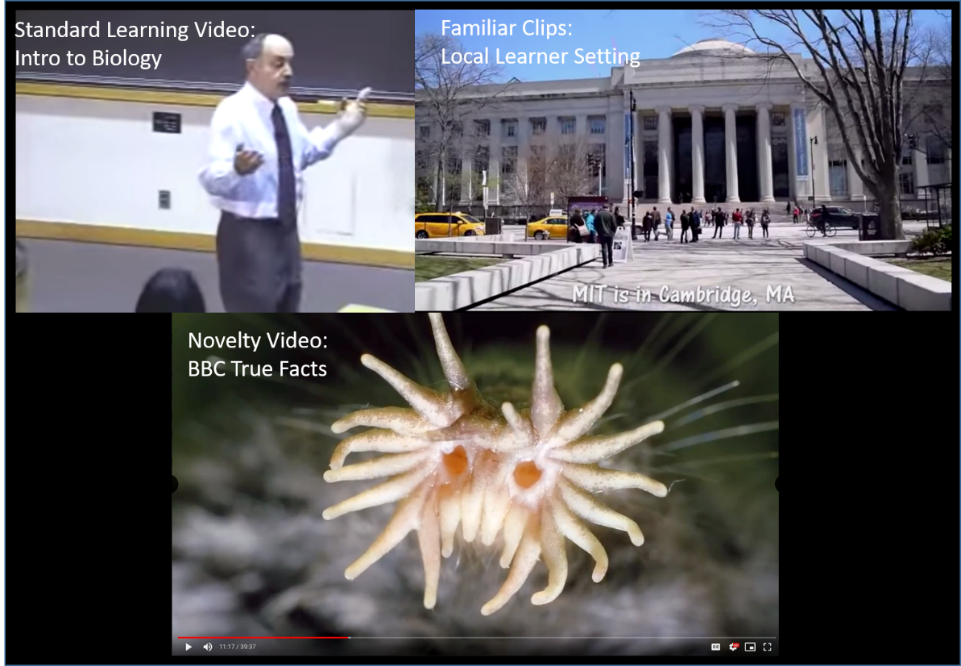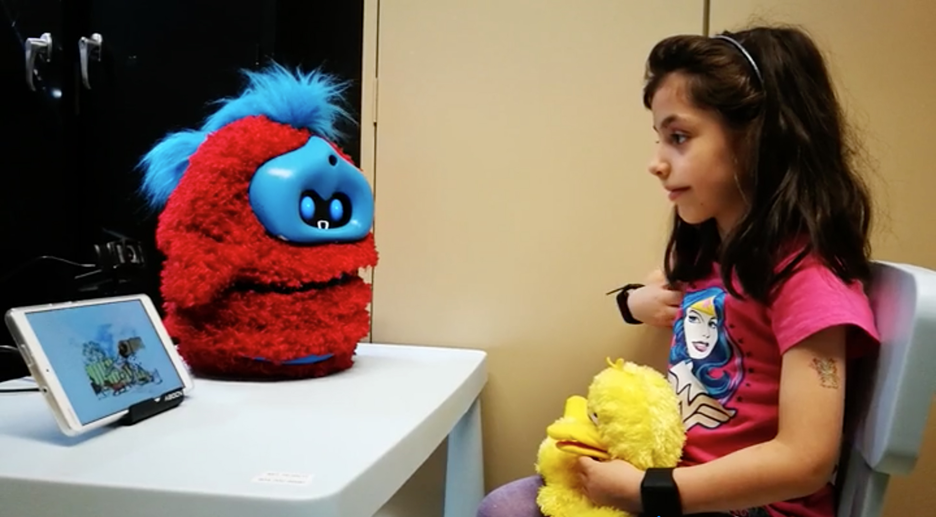
The MIT Integrated Learning Initiative (MITili) has provided nearly $1M in funding this year to six research projects. MITili recently met with each team to inquire about the progress of their research, discuss ways their findings can be shared at the end of the year, and consider any collaborations that might grow through cross-team discussions. The following report includes the original abstract as well as a brief summary of the research team’s progress to date. We are excited to follow up with the teams again later in the coming months as their projects come to an end. In the meantime, you can sign up for our monthly newsletter to learn more about our research.
Improving Learning effectiveness with adaptive physical tools – Stefanie Mueller and Robert C Miller
Abstract
Prof. Mueller and her team will develop a set of adaptable tools across different application areas, first focusing on conceptual development, then carried out by the students in her class in the fall. Next, the team will measure the learning gain and study the learning effectiveness of these new adaptive tools versus current adaptive tools through a randomized control trial. Finally, the team will develop a framework for designing adaptive tools with optimal learning effectiveness which will be fully automated, ensuring every learner can learn independently without the need for additional teachers. This new adaptive system has the potential to lead to higher retention of learners since learners are not overwhelmed but challenged at just the right level.
Update
Dr. Mueller and her students have been hard at work creating several interesting adaptive learning projects. One project, the American Sign Language (ASL) glove project showed promise in helping people learn sign language with the use of mechanical pressure on the user’s fingers to guide the learner into the correct hand positon. Although now just a prototype, the glove proved to be successful in monitoring the motion and relaying feedback to the user.
Motor-skills learning has been studied extensively by psychologists and learning researchers since the 1970s. Beyond factors such as the personality of the learner and the learning environment, researchers have found that the difficulty of the task plays a major role when learning. As can be seen in the figure below, when the task’s difficulty matches the learner’s optimal challenge point, learners have the highest potential for learning. In other words, when the task is neither too easy nor too hard for the learner’s current skill level, learners tend to progress optimally.

The impact of infusing computation and visualization into introductory physics subjects – Kyle Keane, Michelle Tomasik, and Peter Barendse
Abstract
Keane and his team will explore the potential benefits of utilizing computer programming and visualization to solve and understand undergraduate physics problems. The study will utilize a 2x2 factorial design to study how the independent variables of learning and computer programming and visualization affect the dependent variables of physics comprehension, comprehension of computer programming, and spatial reasoning. If the study’s hypothesizes are born out, such findings may be relevant beyond the realm of undergraduate physics. Chemistry, biology, mathematics, as well as other fields may find that they can boost subject comprehension by incorporating coding and visualization into their curriculum.
Update
This fall Keane and his team ran the Physics MOOC (8.01.1) Introduction to Physics while successfully including visualization models for certain problem statements, offered only to a subset of students. The MOOC received too few students this fall to qualify for statistical analysis but will be rerun next fall with the same groups (control and visualization methods). One outcome is the creation of open source software which will help distribute skill levels in cohorts of online classes. Another interesting question raised is whether story-telling can help make education more effective. The visualization cues introduced included a short story line of “Mary” who adventurously found herself hanging from the back of trucks or being shot out of a canon to demonstrate physics problems (see below). It is hopeful that with the rerun and surveys this coming fall, we’ll find more answers to these questions.

Enhancing learning via ‘novelty insertion’: Employing the neuroscience of learning to create more effective pedagogical approaches – Dr. Pawan Sinha, Annie Cardinaux, Riccardo Barbieri, and Hossein Netjati
Abstract
Research in neuroscience has revealed compelling novelty-department modulation of the mesolimbic dopaminergic system. Professor Sinha and his team will use various course modules from the MITx library to insert short novel clips on diverse, unusual topics derived from a variety of sources such as NASA, PBS, and National Geographic. Students will be asked to provide a rating for how engaging each video was, as well as measured for heart-rate and performance scores corresponding to each module. Data will be analyzed to determine whether videos with ‘novelty insertions’ result in higher engagement and improved learning.

Update
MIT’s OpenCourseWare videos from the Introduction to Biology class are being updated to include familiar and novelty videos (for example, students walking around MIT–familiar–or videos of BBC True Facts–novelty–see image above). The novelty videos are both engaging and entertaining but include important information for a learner of biology, such as the life cycle of an octopus.
Dr. Sinha and his team use eye tracking, reference data markers, ECG, and EEG to measure participant’s engagement while learning via video. ECG will show how the heart rate is changing in concert with the engagement of novelty videos compared to videos that have either no insertion or familiar content inserted. They are currently collecting and analyzing data and are looking into selecting MITx courses for multi-session evaluation.
Computational modeling dialogic co-reading interaction for improving child-parent conversational turn taking – Cynthia Breazeal, Hae Won Park, Ravi Tejwani, Huili Chen
Abstract
Learning language at a young age is very crucial for children’s later educational success. However, a major problem faced by many children from low socioeconomic status (SES) families today in learning a language is a lack of resources and developmentally important stimulation in their homes and schools. This lack of relevant resources and experiences for many young low SES children leads to a detrimental effect on their language and literacy development. Prof. Breazeal and her team will explore how to implement an early childhood language intervention aimed at promoting and guiding parent-child interaction through a social agent with the ultimate goal of empowering low-SES parents and helping bridge the learning gap between low-SES and high-SES families. The social agent will be designed to engage both the adult and the child in a joint learning activity (e.g., storytelling) and encourage adult-child dialogue.
Updates
Breazeal and her team have begun collecting data focusing on parent-child synchronous reading. Parents are asked to read a storybook via tablet and are then given prompting questions to ask the child regarding what they just heard or what they think might happen next. The goal is to find the best time to ask questions and the best questions to ask. Galvanic Skin Response (GSR) data is collected from both the child and parent, as well as the distance between the child and parent during the reading exercise to ascertain information on what keeps the child more engaged and how the data can be used to encourage more effective parent-child communication.
Eventually the goal would be to build a robot coach for the parent that would show and set examples for parents on what questions to ask or how to use the questions during the reading to encourage back and forth conversational turns. This research is in response to relevant research conducted by MITili Director John Gabrieli.

Converting zombies into learners: Improving MOOC learner retention – Chris Caplice and Eva Ponce
Abstract
Prof. Caplice and his team have categorized MOOC learners into three distinct groups: Leaners, Voyeurs, and Zombies. The learners watch lesson videos and complete work for grades, the voyeurs watch lesson videos but do not complete some work for grades, and the zombies neither watch videos nor complete any graded work. The percentages of these learners are roughly 5%, 25%, and 70% respectively. The objective of their research will be to reduce the number of zombie learners, and reduce the number of learners dropping out of MOOCS through the design, development, and implementation of a range of tools and techniques. The main goal will be the development of a prediction model to estimate learner dropout rates based on student behavior.
Update
With the recent introduction of the MIT MicroMasters program, there is no shortage of data for online learners. There are currently over 18,000 verified learners from 196 countries taking MIT MicroMasters courses. Over the past two years, more than 1,000 credentials have been granted. However, even with that success, over thirty percent of learners still drop out before the course is completed.
The research project has two goals, the first is to predict which students are at risk of dropping out and the second is to create interventions to reduce dropout rates (both student and course are targeted). The team has already completed a database to define variables and extract data as well as completing surveys to find underlying patters for dropping out. Their next step is to create a predictive model for those most at risk of dropping out and target those students with interventions meant to enhance engagement.

Field experiments for education in cognitive science – Esther Duflo and Elizabeth Spelke
Abstract
Poor children in the developing world are increasingly likely to attend school but often fail to master the elementary school curriculum. In India, most primary school graduates cannot pass simple math and reading taught in the first two grades, and even seventh graders may perform arithmetic only by counting tallies. Professor Duflo and her team will work with students in India, testing a suite of games developed by her team that aim to increase children’s readiness for learning school mathematics. The research is unique in its use of games that build on universal, early-emerging concepts of number and geometry that are the subject of intense research in cognitive science.
Update
To date, Math Games has started in all 71 (100%) treatment schools. Each school has been visited at least once, with reporting back of over 70% of schools using the Math Games during visits. Math Games has also increased group discussion in classrooms, where 70% of the classrooms showed increased conversation during Math Games. The team’s next step is to have a second round of games introduced to these classrooms by the end of February, while finalizing the endline assessment and finally launching that assessment with hopes of completing the program in April.
